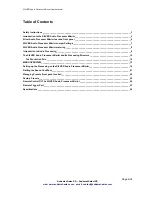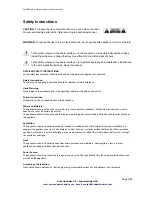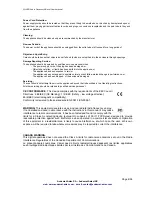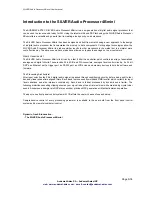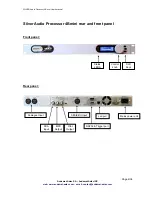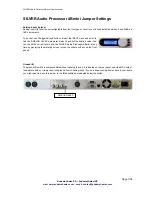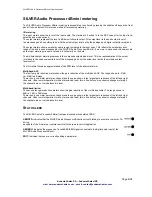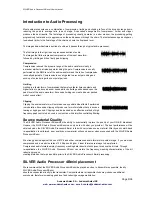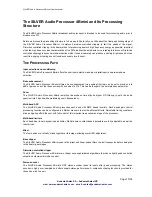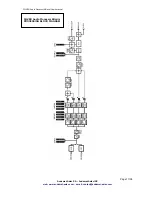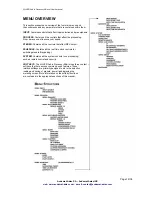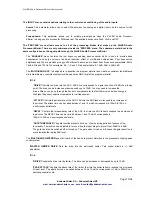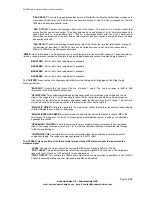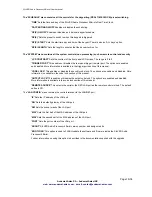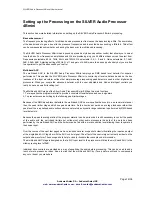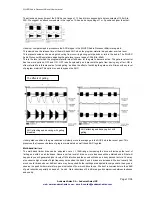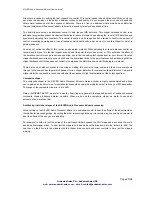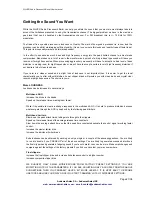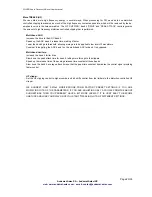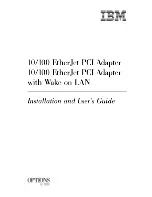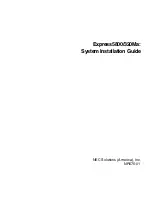
SILVER Audio Processor 4Bmini User’s manual
Page 9/38
Audemat-Aztec SA – Audemat-Aztec INC
web: www.audemat-aztec.com - e-mail: contact@audemat-aztec.com
Introduction to Audio Processing
Most audio processors use a combination of compression, limiting and clipping to 'funnel' the dynamic range down,
reducing the peak to average ratio in each stage. A cascaded arrangement of compressor, limiter and clipper
produces the best results. The first stage of processing usually operates in a slow manner, the processing getting
progressively faster and more aggressive as the audio passes through the chain. The instantaneous peak clipper or
look-ahead limiter is the final stage of the chain and sets the final peak level.
The images below illustrate a section of audio as it passes through a typical audio processor.
The first image to the right is an unprocessed section of audio.
The images that follow represent compression of the input waveform,
followed by limiting and then finally peak clipping.
Compression
Compression reduces the dynamic range of the audio waveform slowly in
a manner similar to a trained operator riding the gain. Compression is usually
performed on the RMS level of the audio waveform and the ratio of compression
is usually adjustable. Compression is usually gated to prevent gain riding and
suck-up of noise during silence or quiet periods.
Limiting
Limiting is a faster form of compression that employs faster time constants and
higher ratios to produce a denser sound while controlling peaks based upon the
peak level of the audio waveform. Excessive limiting can create a busier packed
wall of sound effect.
Clipping
Clipping the audio waveform will not produce any audible side effects if performed
in moderation. Excessive clipping will produce a form of distortion that produces a
tearing or ripping sound. Clipping can also be used as an effective method of high
frequency peak control when used in conjunction with distortion controlling filtering.
Source material Quality
The SILVER Audio Processor 4Bmini has the ability to substantially improve the quality of your ON-AIR broadcast.
However the SILVER Audio Processor 4Bmini can only work with what you provide it. The best performance will be
obtained when the SILVER Audio Processor 4Bmini is fed with very clean source material. After dynamic multi-band
re-equalisation is performed, poor quality source material will sound poorer when processed with the SILVER Audio
Processor 4Bmini.
We strongly advise against the use of MP’s and other compressed audio formats for audio storage. If you must use
compressed audio we advise rates of 2 6 Kbps and higher. Linear formats are always to be preferred.
Compressed audio formats employ frequency masking data reduction techniques to reduce the bit-rate. Through
re-equalisation the SILVER Audio Processor 4Bmini can violate the frequency masking characteristics of the bit
reduction process,
creating distortion that was inaudible prior to the SILVER Audio Processor 4Bmini processing.
SILVER Audio Processor 4Bmini placement
We recommend that the SILVER Audio Processor 4Bmini be placed as close to transmitter as possible. Ideally
SILVER Audio Processor 4Bmini
should be connected directly to the transmitter. Composite studio to transmitter links may introduce additional
overshoots, therefore increasing peak level and reducing average modulation.


